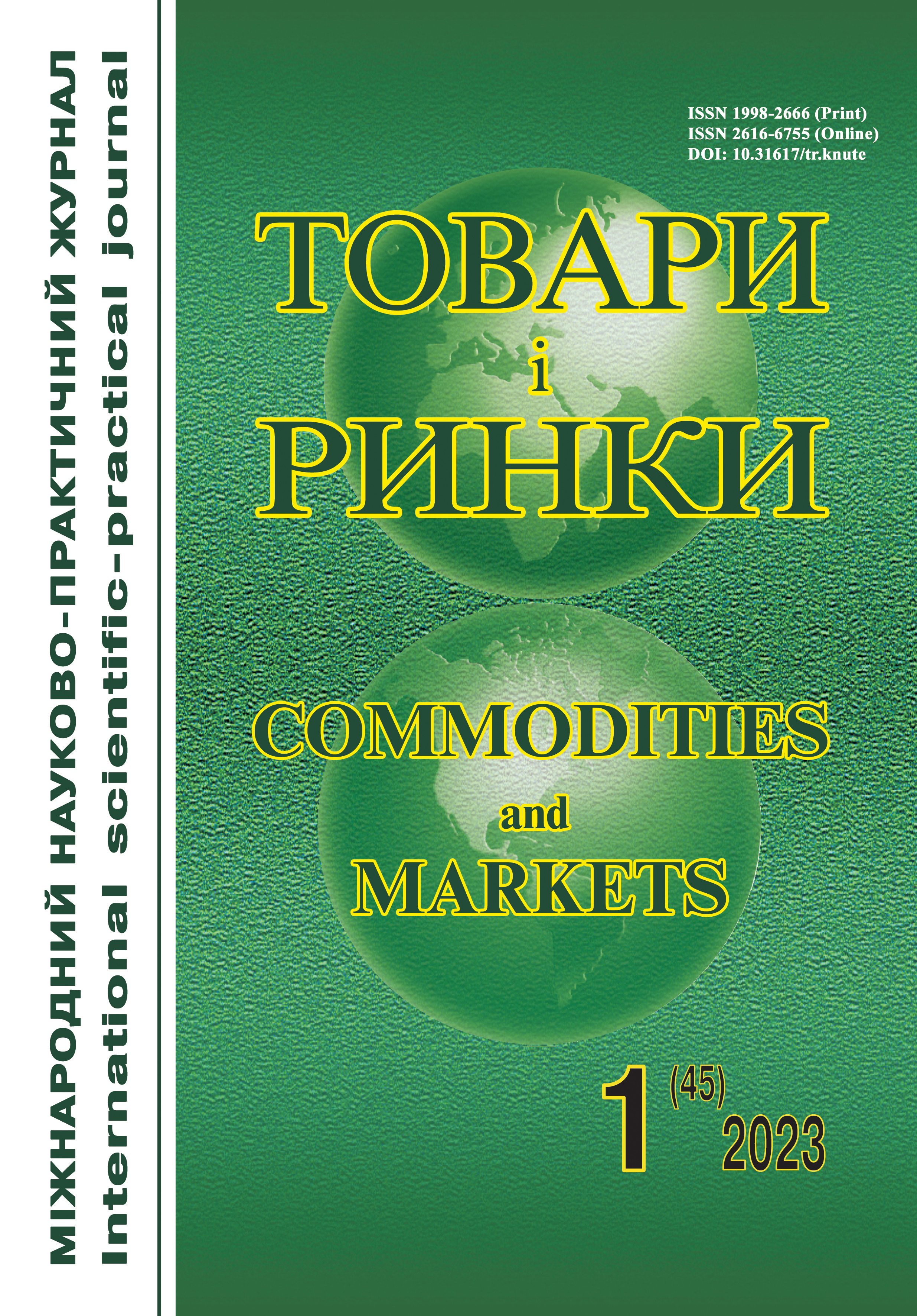Commodity evaluation of artistic and antique glass products
DOI:
https://doi.org/10.31617/2.2023(45)07Keywords:
glass products, commodity evaluation, market, value forecasting, expert evaluation, evaluation criteriaAbstract
Introduction. Glass products reflect all directions of the historical development of art, technology and culture of mankind as a whole, therefore there is a need for their expert evaluation.
Problem. Necessity of art and decorative and utilitarian glass products value forecasting in expert tasks on commodity valuation and damage assessment as a result of their loss.
Methods. To forecast the value of modern and antique artistic and decorative and useful glass products, the method which involves the study of pricing patterns on the market in two independent areas is proposed. The first is the market of modern (new) products, which are put up for open sale at prices determined by the seller. The second is the market of antique glass products, which have gained recognition now as symbols of the cultural and artistic traditions of the past.
Results. Taking into account the fact that there are two independent markets for artistic and decorative glass products – the market for modern products and the market for antique products – two input databases were developed for the commodity evaluation of these products.
It has been established that the value indicators of antique glass, in general, exceed the value indicators of modern glass. This regularity is especially well visible on expensive objects that are sold at auctions and, in the vast majority, are works of art or made at world-renowned manufactories. The presence of additional positive information about well-known factories and craftsmen leads to increase in the attention of potential buyers to glass products and increase in value indicators.
As a result of logarithmization, three distinct trends (intervals) of glass products value indicators formation on the Ukraine market were established. The expediency of quantitative accountting of positive information about glass products according to the ten criteria presented in the protocol for the evaluation of cultural monu-ments has been confirmed.
Conclusions. Predicted value indicators are theoretically based, renewable and can be veryfied relatively to the goal set by the appraiser. The algorithm for calculating the projected value indicators of modern and antique glass products should be used to determine the level of financial losses incurred by the owner or the national culture as a whole because of the destruction of the relevant items.
References
Gable, Carl I. (2004). Murano Magic: Complete Guide to Venetian Glass, its History and Artists. Schiffer. ISBN 0-7643-1946-9 [in English].
Judith Benhamou-Huet Art Business (2). (2007). Paris Editions Assouline. ISBN 978-5-9901380-1-8 [in English].
Rao, C. Radhakrishna, Toutenburg, H., Shalabh, & Heumann, C. (2008). Linear Models and Generalizations. 3rd ed. Berlin: Springer. ISBN 978-3-540-74226-5 [in English].
Saaty, Thomas L. (2008). Relative Measurement and its Generalization in Decision Making: Why Pairwise Comparisons are Central in Mathematics for the Measurement of Intangible Factors – The Analytic Hierarchy/Network Process. RACSAM (Review of the Royal Spanish Academy of Sciences, Series A, Mathematics). Vol. 102, 2, 251-318 [in English].
Indutnyj, V. V. (2014). Prognozuvannja vartosti kul’turnyh cinnostej u konteksti istorii’ matematychnogo prognozuvannja [Forecasting the cost of cultural values in the context of the history of mathematical forecasting]. Al’manah "Kul’tura i suchasnist’" – Almanac "Culture and Modernity", 1, 83-93 [in Ukrainian].
Indutnyj, V. V. (2016). Ocinka kul’turnyh cinnostej [Assessment of cultural values]. Kyi’v: Kyi’vs’kyj nacional’nyj torgovel’no-ekonomichnyj universytet. ISBN 978-966-629-800-6 [in Ukrainian].
Bilous, E. (2014). L’vivs’ka shkola hudozhn’ogo skla kriz’ pryzmu dijal’nosti special’noi’ kafedry nacional’noi’ Akademii’ mystectv [Lviv School of Art Glass through the prism of the activities of the special Department of the National Academy of Arts]. Ukrai’ns’ka kul’tura: mynule, suchasne, shljahy rozvytku – Ukrainian culture: past, present, ways of development: Collection of scientific papers. (Issue 20). (Vol. 1), (pp. 123-130) [in Ukrainian].
Shmyg, R. A., Bojarchuk, V. M., Dobrjans’kyj, I. M., & Barabash, V. M. (2010). Sklo hudozhnje. Terminologichnyj slovnyk-dovidnyk z budivnyctva ta arhitektury [Glass art. Terminological dictionary-handbook on construction and architecture]. Shmyg, R. A. (Ed.). L’viv. ISBN 978-966-7407-83-4 [in Ukrainian].
Pro zatverdzhennja Instrukcii’ pro porjadok vyznachennja ocinochnoi’ ta strahovoi’ vartosti pam’jatok Muzejnogo fondu Ukrai’ny: Nakaz Ministerstva kul’tury Ukrai’ny № 325 vid 13.07.1998 № 325 (red. vid 17.10.2002) [On the approval of the Instruction on the procedure for determining the estimated and insurance value of monuments of the Museum Fund of Ukraine: Order of the Ministry of Culture of Ukraine № 325 dated 13.07.1998 № 325 (ed. dated 17.10.2002)]. zakon.rada.gov.ua. https://zakon.rada.gov.ua/laws/show/z0496-98#Text [in Ukrainian].
Indutnyj, V. V., & Pohodjashha, O. B. (2021). Ekspertyza pamʼjatok kul’tury [Examination of cultural monuments]. Kyi’v: "Litera LTD" [in Ukrainian].




